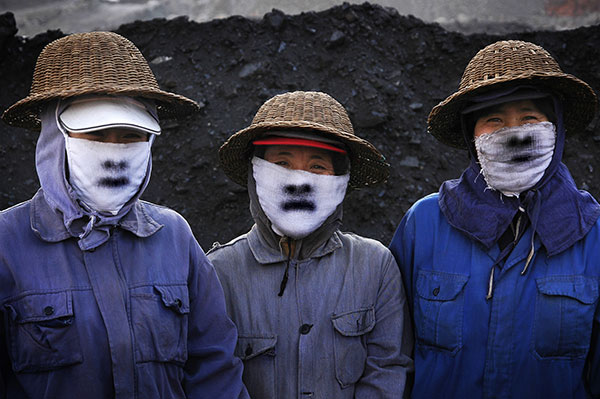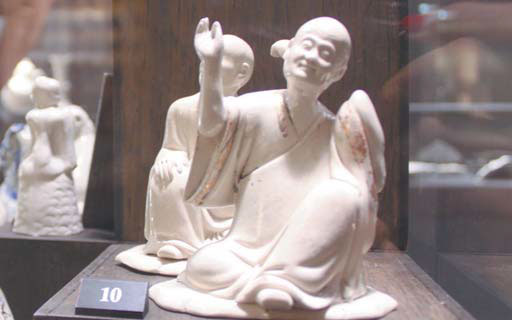Happy potters all fired up about ancient Chinese porcelain
Updated: 2015-08-14 08:53
By Peng Yining(China Daily Europe)
|
|||||||||||
|
Ceramics made by local people in the 18th century at a museum in Stoke-on-Trent shows Chinese influence. Photos by Peng Yining / China Daily |
Inspired by nature
Mia Sarosi, a ceramics artist based in Oxfordshire, England, made a flat-bottomed bowl decorated with a dragon pattern for an exhibition at Art in Action, one of the UK's largest annual art events, held at Waterperry Gardens in Oxfordshire.
When she was making the work, Sarosi constantly scrutinized the dragons seen on Chinese porcelain from the Ming Dynasty (1368-1644) because she is interested in the positive symbolism of the mythical beasts in both Eastern and Western cultures.
"For the Art in Action show in July, I used gold luster for the dragon's flames. I'm aware that in China gold is a color that's used a lot in celebrations," says the artist, who began working with ceramics in 1991.
Many of her works are inspired by Chinese blue and white ware, but she also tries to incorporate her own ideas. For a blue and white plate she presented at the event, Sarosi painted long tailed tits and a cherry tree - the view outside her window.
"I was inspired by the cherry trees in A.E. Houseman's poem, Loveliest of Trees, the Cherry Now," she says.
Although first taught and inspired by Chinese potters, British artists have developed their own styles. In the 18th century, when hand-painted blue and white Chinese porcelain was fashionable and expensive, British potters created an affordable alternative by printing their designs onto earthenware. They also created the famous "willow pattern" motif by combining elements from several different Chinese patterns to produce a new design.
Today's Top News
Tsipras resigns, asking snap general elections
Preparations shutter Forbidden City, other major tourist spots
Changing face of illegal immigration
President Xi Jinping calls for crews not to ease up
Jon Bon Jovi sings in Mandarin for Chinese Valentine's Day
DPRK deploys more fire units to frontlines with ROK
No cyanide detected from Tianjin river section with fish deaths
Greek PM to resign, seek snap election in September
Hot Topics
Lunar probe , China growth forecasts, Emission rules get tougher, China seen through 'colored lens', International board,
Editor's Picks

|

|

|

|

|

|







